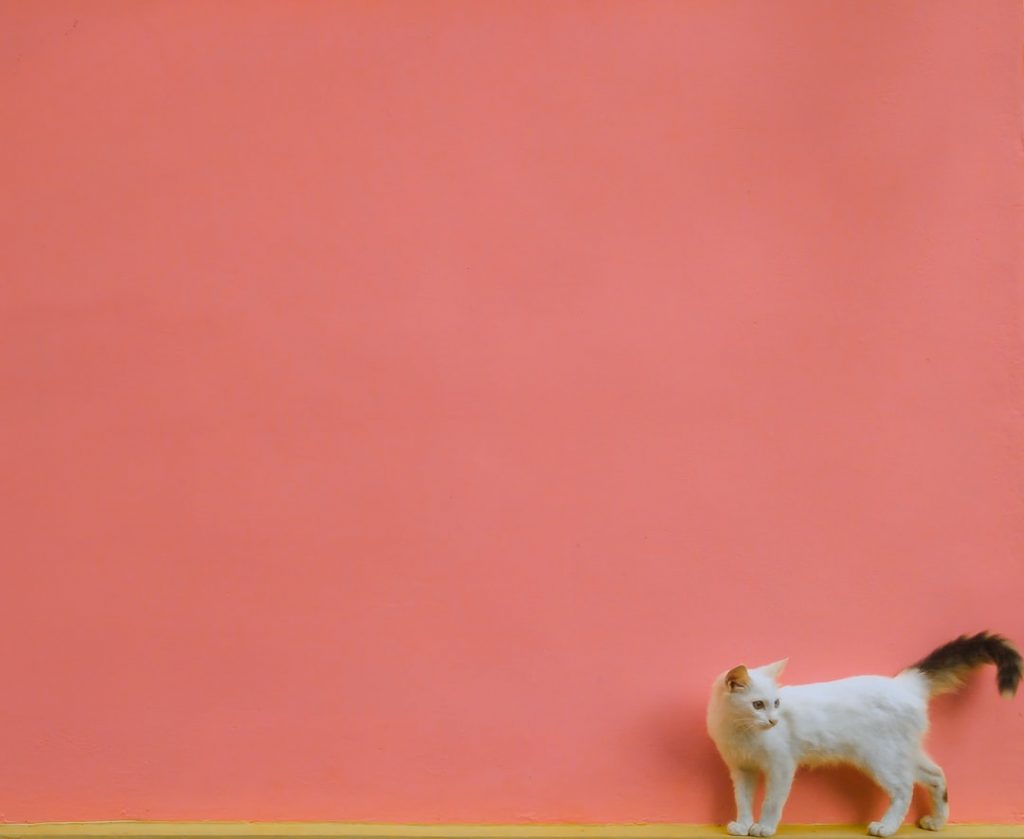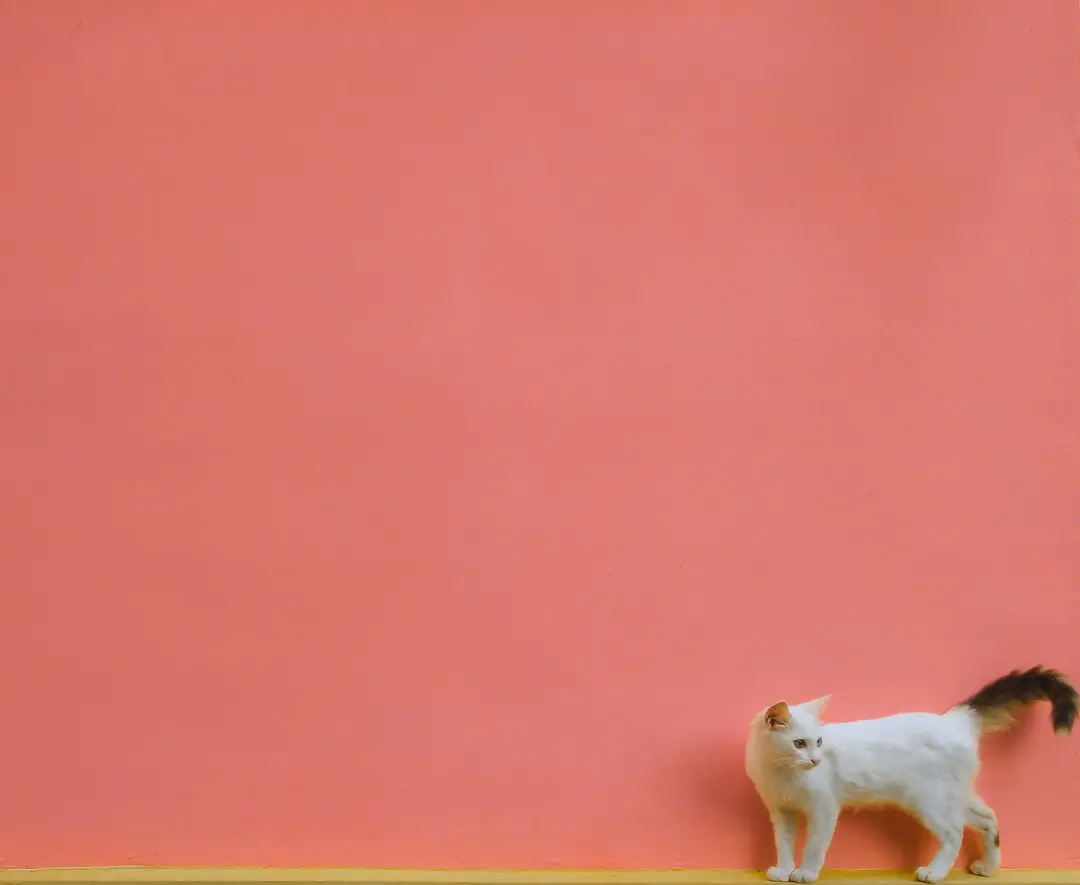As any cat parent knows, our feline friends can be very particular about what they like and what they don’t.
Cats’ sensitive noses mean that they show a strong negative response to citrus scents. In contrast, research shows that they can’t get enough of the smell of catnip and honeysuckle. Cats also have excellent hearing and can get easily startled by loud noises. Classical music, though, can be very soothing for them.
But what about cats’ visual preferences? What colors do cats like? This kind of information can be useful if you’re looking to make your home environment more feline-friendly. Or maybe you’re just curious about the way your cat sees the world.
From your feline’s favorite shades to the hues they hate, keep reading to find out more about cat color preferences!

Contents
Wait, Aren’t Cats Completely Colorblind?
People used to think that cats were so colorblind that they could only see varying shades of gray. So, while they might be able to distinguish between black and white, they had no concept of color. This kind of color blindness is known as monochromacy.
An inability to see any color is rare in humans. But monochromacy isn’t typical for cats either. It turns out that they do, in fact, see in color. But, while it’s a misconception that cats are completely colorblind, they can’t see some colors as well as others.
What Colors Can Cats See?
As you can imagine, it’s hard to know exactly what animals see. After all, they can’t tell us!
But, to understand more about how cats see the world, we can compare their photoreceptor cells to those of humans. The two kinds of photoreceptor cells in the retina are called rods and cones. Rods allow us to see at night and provide peripheral vision. They help us distinguish between shades of gray and degrees of brightness. Cones, in contrast, are responsible for color perception and day vision.
Both humans and cats are trichromats. This means that they have three kinds of cones that allow them to see red, green, and blue. Although, cats have a high amount of rod receptors and a low amount of cone receptors. Humans, in contrast, have a lot more cone receptors than rod receptors. This explains why cats have far better night vision than humans but why our eyes are better able to detect colors.
As trichromats but with a low concentration of cones, cats see the world in a way comparable to a colorblind human. Or, to be specific, a human with protanomaly color blindness. This is a type of red-green color blindness that makes red appear more like green.
Cats, like humans with protanomaly, can see green and blue but find reds and pinks confusing. In turn, colors made up of red and other hues, such as orange or purple, tend to look like another shade of green or blue. Their rod and cone ratios also mean that our feline friends can’t see the same vibrant shades and color saturation as we can.
What Colors Do Cats Like the Most?
Cats’ eyes aren’t designed to distinguish between a wide range of colors in the same way that human eyes are. Although, this doesn’t mean that they don’t show any color preferences at all.
Since cats see shades of green and blue better than other colors, you could consider these to be their favorite hues. Toys, feeding bowls, and other cat accessories in these colors will likely pop out at your cat first. So, if you want your cat to perceive the color of something in a similar way to what you see, stick to green and blue. Otherwise, color doesn’t matter a whole lot to cats.
If you’re wondering how to connect better with your cat, however, your newfound knowledge about their vision can still help. Cats might not be able to see color well and are likely near-sighted. But cats’ eyes are perfectly suited to their role as natural hunters of ground-dwelling prey. They don’t need to see vivid colors or faraway details to be able to detect a rodent scurrying nearby.
Humans might react more to color, but cats react more to fast movements. Their 200-degree field of vision also makes them better at spotting something out of the corner of their eye.
So, if you want to give your cat a toy they’ll love, it’s no use worrying about whether they’ll prefer the yellow ball or the blue mouse. Instead, try to find one that incorporates fast movements. Or, better yet, consider how you could attract their attention by moving it around yourself.
Although cats might not care much about color, receiving stimulation like this is a lot more important for cats than many pet parents realize. Cats also love getting opportunities to show their natural feeding behavior. Rather than getting hung up on whether to put their food in a red or a green bowl, forget the bowl and give them a chance to stalk and pounce on their “prey”. Trust us, they’ll love it!
Which Colors Do Cats Find Soothing?
Cats don’t often show the same kinds of strong reactions to certain colors that we’d expect from humans. But, there are ways to use color to calm and soothe your cat if necessary.
Pale blues and violets are the colors that cats find most calming. These colors can even help to reduce stress in your cat. For this reason, you’ll find a lot of veterinary offices painted various shades of lilac and baby blue.
Many feline experts and veterinarians suggest that cats react well to an Easter palette of pastel shades, especially those on the cool spectrum. This makes colors such as green, lilac, and blue are perfect for vets to wear when treating their feline patients. Likewise, if your kitty is prone to anxiety during vet visits, you might consider bringing along a pale green or lilac blanket to help calm them down.
Are There Any Colors That Cats Hate?
Are you worried about your choice of wall color having a negative effect on your cat? Or whether your red shirt might be the reason your cat doesn’t like you anymore?
Unfortunately, there’s no hard and fast proof that cats hate any color in particular. This is likely due to the limited range of colors they see. Since most of their world appears to them as washed-out shades of gray, green, and blue, there aren’t any colors that stand out enough for them to perceive them as negative.
That said, some cats can have a problem with white. As well as a higher concentration of rods, cats have a structure behind the retinas in their eyes called a tapetum. Scientists think that this feature is another reason why they have such good night vision.
Cells in the tapetum act like mirrors, reflecting the light passing between the rods and cones back to the photoreceptors. This allows cats to make the most of the minimal amount of light available at night. Details that are undetectable to human eyes are much easier for cats to see because of this. And this mirroring effect is also what makes cats’ eyes glow in the dark.
White is a complete absence of darkness, meaning that cats perceive it to be much brighter than we do. What’s more, cats’ night vision prepares them for nighttime hunting in nature. White isn’t very common in the wild, and especially not the artificial whites we’re used to seeing in man-made materials and environments with added brightness.
Such whites appear to glow for cats. You should be surprised, then, if your cat isn’t too keen on spending time in your bright white kitchen. White paint can be especially bright and unnatural-looking so for your cat it will seem harsh and abrasive. With this in mind, you might want to go for a softer shade of beige or buttermilk in rooms your cat spends time in.
Likewise, your cat might not react well to a vet coming approaching them while wearing a white lab coat. And, when buying accessories for your kitty such as a pet carrier, avoid white. The bright glow of the white will only serve to increase their anxiety in an already stressful situation.
Your Guide to Cat Color Preferences
If you’ve ever wondered, “what colors do cats like?” this guide to cat color preferences should have satisfied your curiosity and then some!
For the most part, cats aren’t that fussy about color. They don’t see the same kinds of rich and vibrant shades that we can see so they won’t often show a whole lot of preference for one color over another. Instead, they’re usually more concerned with the fast movements of objects just as their ancestors would have been in the wild.
But, cats do tend to find pale shades of green and blue more soothing than other colors. And, the way cats’s eyes work means that white can be harsh and abrasive for them to look at.
Want more fascinating feline facts? Be sure to check out our other articles on cats for all the latest kitty updates



